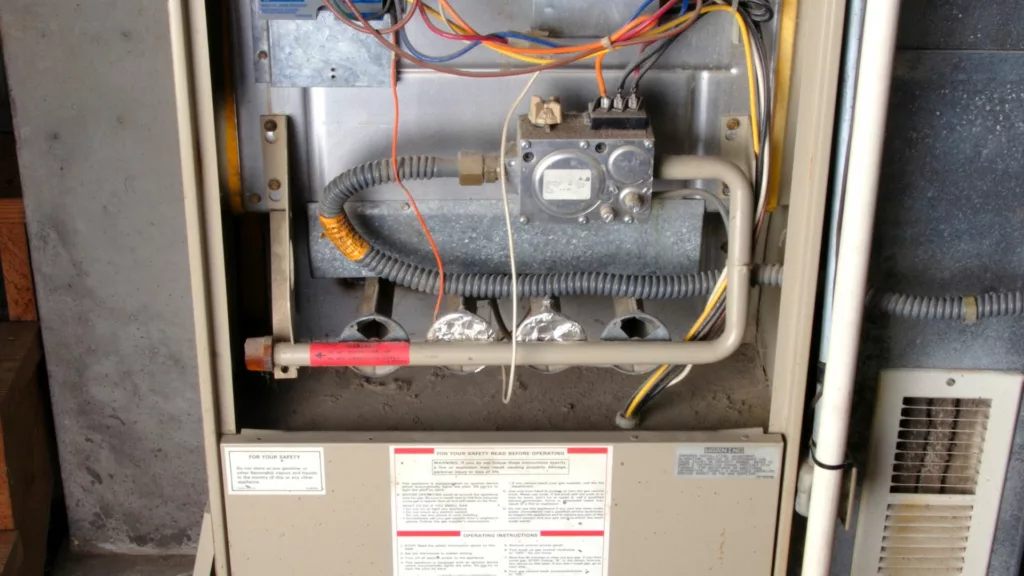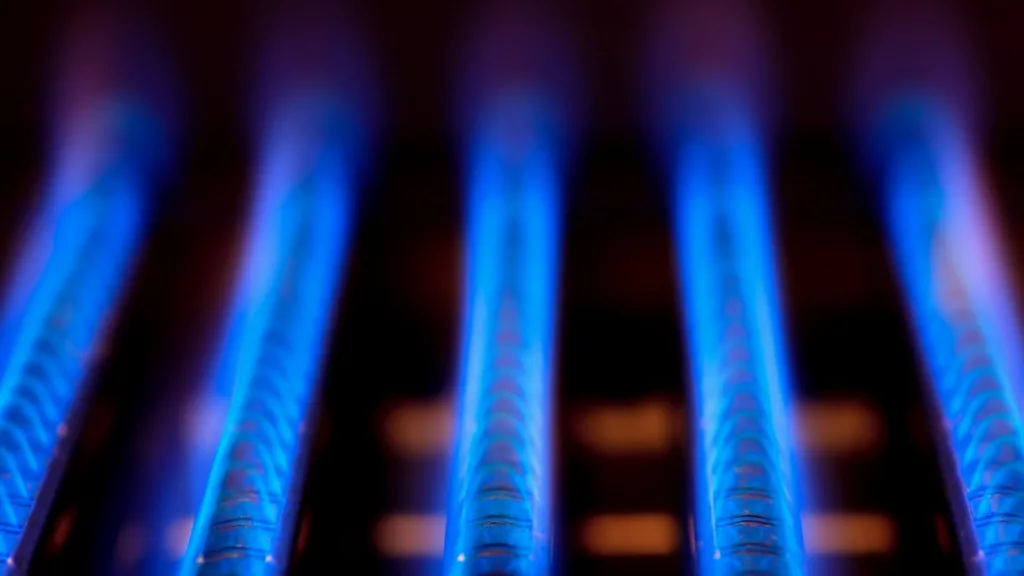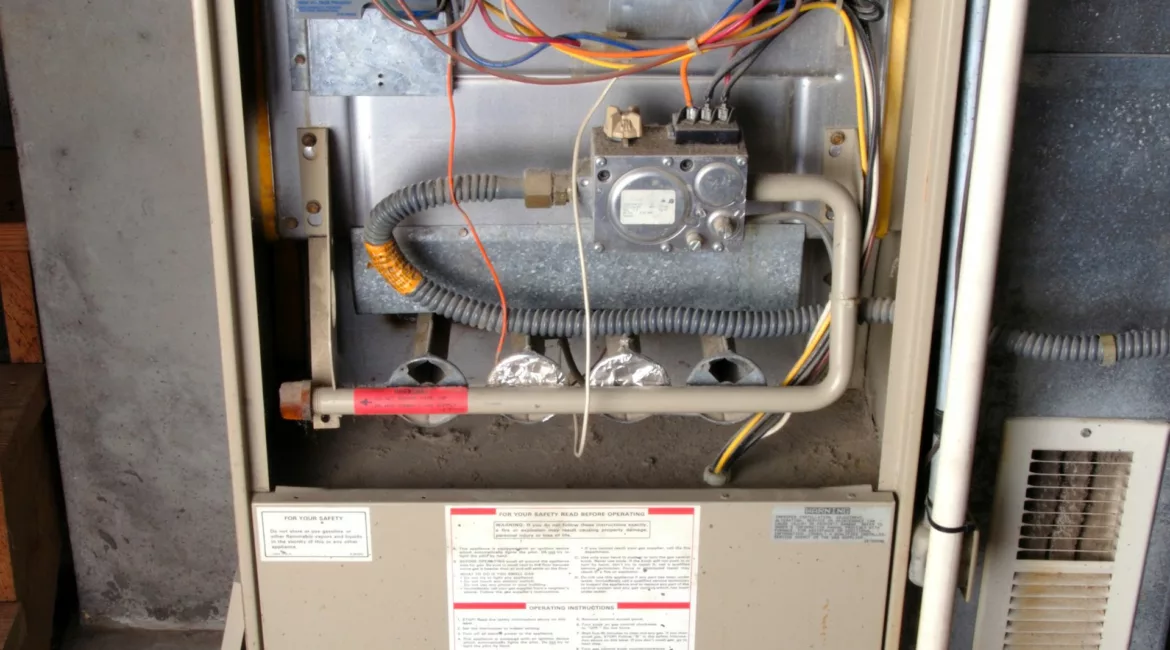Keeping your home warm and safe through the winter starts with a well-maintained furnace. Surprisingly, many overlook the necessity of annual furnace inspections. This article will guide you through why these checks are crucial and how they can prevent potential hazards while improving efficiency.
Stay informed and keep your home cozy and secure.
Key Takeaways
- Professionals check your furnace from top to bottom, including the thermostat, gas leaks, and safety switches to ensure everything runs smoothly and safely.
- Regular inspections can prevent big problems by spotting small issues early on. This keeps your home warm, safe, and can save you money on energy bills.
- Skipping yearly checks increases the risk of dangerous situations like carbon monoxide leaks or even fires. It’s better to have a professional take a look than trying to do it yourself without the right knowledge.
- A well – maintained furnace not only works more efficiently but also lasts longer. This means you get the most out of your heating system over the years.
- Choosing a professional inspection every year gives you peace of mind during winter months, knowing your furnace is in good condition to keep your home warm and safe.
What is a Furnace Inspection?

A furnace inspection involves a thorough examination of your heating system by a professional to ensure it functions safely and efficiently. Experts check various components, from the thermostat to the venting system, during this process.
Purpose and Importance
Annual furnace inspections serve a critical role in maintaining the safety and efficiency of your home’s heating system. These checks are essential for spotting potential problems early on, which can prevent costly repairs or breakdowns later.
They ensure that the furnace operates efficiently, contributing to lower energy bills and extending the lifespan of your unit. Additionally, these inspections play a vital part in preserving indoor air quality and safeguarding against carbon monoxide leaks, making them an indispensable practice for homeowners.
Scheduling an annual inspection also aligns with manufacturer warranty requirements, reinforcing the longevity and performance of your heating system. This regular maintenance not only boosts your furnace’s efficiency but also protects the well-being of those living in your home by preemptively identifying issues before they evolve into major concerns.
With such significant benefits tied to safety, cost savings, and compliance with warranty standards, it becomes clear why committing to yearly furnace checks is a smart move for any homeowner or commercial property owner.
What is Included in the Furnace Inspection
A furnace inspection is a crucial process that ensures the heating system in a home or commercial property operates efficiently and safely. Specialists meticulously examine several components to prevent any potential issues that could lead to costly repairs or dangerous situations. Here’s what typically gets covered during the assessment:
- Checking for Gas Leaks: Inspectors use specialized equipment to detect leaks, which can pose serious health and safety risks.
- Carbon Monoxide Leak Detection: Another critical safety measure involves testing for this colorless, odorless gas that furnaces can emit if they’re malfunctioning.
- Thermostat Calibration: Ensuring the thermostat is correctly calibrated guarantees that it communicates accurately with the furnace, optimizing energy use and maintaining comfortable temperatures.
- Electrical Component Inspection: This includes a thorough check of all wirings, connections, and controls to ensure they are in good working order and don’t pose any fire hazards.
- Air Filter Examination: Dirty or clogged filters hinder airflow and reduce air quality; inspectors assess their condition and recommend replacements when necessary.
- Heat Exchanger Review: The heat exchanger must be in good condition to operate safely; cracks or damage can lead to dangerous emissions into the home.
- Burner and Flame Sensor Check: Inspectors observe the burner’s operation, looking for correct flame size and color, indicating efficient combustion. They also ensure the flame sensor is clean and functioning properly.
- Blower Motor and Fan Assessment: This involves verifying that these components move air efficiently through the system without undue stress or noise, including checking lubrication of moving parts where applicable.
- Safety Inspection of Features: All safety switches, including the blower door switch, are tested to make sure they correctly shut off power to avoid accidents during service or operation.
Conducting these inspections annually helps identify minor issues before they become major problems, ensuring your furnace runs smoothly throughout colder months.
Experts next delve into why routine inspections are not just beneficial but essential for continuous safe operation.
Why it is Necessary
Understanding what is included in a furnace inspection naturally leads to recognizing its critical necessity for homeowner safety. Annual furnace inspections are vital because they tackle potential issues head-on before they escalate into significant problems, ensuring the heating system operates safely and efficiently.
Ignoring these annual checks can result in dangerous carbon monoxide leaks or even fire hazards, jeopardizing the well-being of occupants.
Professionals during these inspections meticulously assess the condition of your furnace to catch any malfunctions that could lower indoor air quality due to accumulated dust and debris.
This preventive measure not only safeguards against life-threatening situations but also promotes a healthier living environment by maintaining clean air flow throughout your home or commercial property.
Benefits of Annual Furnace Inspections

Annual furnace inspections play a crucial role in maintaining your home’s comfort and safety. These check-ups can lead to improved system efficiency, which translates into lower energy costs for homeowners.
Increased Efficiency and Lower Energy Bills
Regular furnace inspections help ensure your heating system runs at peak efficiency. A well-maintained furnace uses less energy to heat your home, which translates into lower energy bills for you.
Over time, even minor issues with a furnace can lead to decreased efficiency and increased operating costs. By catching these problems early during an annual inspection, you not only maintain optimal performance but also save money on your energy expenses.
Homeowners and commercial property owners alike benefit from improved indoor air quality with routine maintenance of their heating systems. An efficient furnace reduces the amount of fuel consumed and decreases harmful emissions.
This means cleaner air inside your property and less environmental impact outside. Investing in annual inspections is a proactive step towards healthier living spaces and a smaller carbon footprint.
Detecting Potential Issues Early
Annual furnace inspections play a critical role in identifying potential problems before they escalate. Early detection of issues can prevent costly repairs or complete replacements down the line, saving homeowners and commercial property owners significant amounts of money.
This preventative approach ensures that minor malfunctions are addressed promptly, avoiding interruptions in service during critical times.
Moreover, catching these issues early contributes to the overall safety of a property by reducing the risk of dangerous situations such as carbon monoxide leaks. With proactive maintenance, furnaces operate more reliably and efficiently, safeguarding against unexpected breakdowns and hazardous conditions.
Through these inspections, professionals assess key components for signs of wear or damage, ensuring that every part functions optimally for the safety and comfort of all occupants.
Ensuring Safe Operation
Ensuring the safety of your home and family is one of the primary reasons to conduct annual furnace inspections. These checks help prevent dangerous situations such as gas leaks or carbon monoxide buildup, which can pose serious health risks.
A professional technician will examine critical components like the heat exchanger, ventilation system, and safety controls during an inspection. They make sure everything operates correctly, keeping harmful emissions out of your living spaces.
Regular inspections not only safeguard against hazardous conditions but also contribute to the overall wellbeing of your heating system. By identifying potential problems early on, you can address them before they escalate into major issues that could compromise safety.
This proactive approach allows homeowners and commercial property owners alike to enjoy peace of mind, knowing their furnace functions safely and efficiently throughout colder months.
Can Homeowners Perform Their Own Furnace Inspections?
Homeowners often wonder if they can inspect their own furnaces to save money and time. While it seems like a cost-effective option, the process involves risks that must not be overlooked.
Understanding the Risks
Trying to inspect your own furnace without the right tools or knowledge can be dangerous. You may expose yourself to harmful gases or risk injury if you’re not sure what you’re doing.
These inspections involve more than just a quick look; they require specific expertise that most homeowners don’t have.
Professional inspections focus on identifying issues before they become major problems, saving both money and ensuring safety in the long run. Skipping this crucial step or trying to do it yourself might lead to overlooking potential hazards, which could result in costly repairs down the line.
Trusting professionals means safeguarding your home against these risks effectively.
Importance of Professional Inspections
Professional inspections are essential for maintaining the safety and efficiency of your home’s heating system. Inspectors bring a wealth of knowledge and experience, making it possible to spot potential safety hazards or furnace issues that might go unnoticed by homeowners.
These professionals have the tools and expertise needed to conduct thorough examinations, ensuring every component operates correctly. They play a critical role in preventing carbon monoxide leaks – a silent but deadly threat that can arise from faulty furnaces.
Moreover, they identify fire hazards early on, safeguarding your property and loved ones.
Choosing professional inspections annually also offers homeowners peace of mind. You gain confidence in your heating system’s reliability throughout the colder months, removing any guesswork about its performance.
This proactive approach not only keeps your household safe but can also save you from costly repairs down the line by catching problems early. Next up, let’s explore what actually happens during these vital furnace inspections.
Cost Comparison
Understanding the financial implications of furnace inspections is crucial for homeowners. The decision between a DIY inspection and hiring a professional can significantly impact maintenance budgets. Below is a cost comparison to help make an informed choice.
| Inspection Type | Cost | Potential Savings | Potential Risks |
|---|---|---|---|
| DIY Furnace Inspection | $0 – Cost of Tools/Equipment | Up to $150 (Avoiding Professional Fees) | Missed Issues, Improper Handling, Future Repairs |
| Professional Furnace Inspection | $80 – $150 | Long-term Savings on Repairs/Replacements | Initial Cost |
This comparison underscores the immediate savings of a DIY approach but highlights the potential for higher costs due to overlooked issues. Homeowners must weigh short-term savings against the risk of more significant, more expensive problems down the line. The expertise of a professional can catch subtle signs of wear or malfunction that might escape the untrained eye, leading to preemptive repairs that preserve the furnace’s integrity and efficiency.
Next, let’s delve into the specifics of what is checked during a furnace inspection.
Annual Furnace Inspection: Conclusion
Regular furnace inspections keep your home safe and heating system efficient. They detect issues early, preventing costly repairs. Technicians ensure no dangerous leaks are present and your system operates safely.
Investing in professional checks gives you peace of mind for the winter months ahead. Taking this step yearly safeguards not just comfort, but ultimately, your family’s well-being too.
Annual Furnance Inspection (FAQs)
1. Why is an annual furnace inspection important?
An annual furnace inspection ensures your heating system operates safely and efficiently throughout the winter.
2. What happens during a furnace inspection?
A technician checks for leaks, examines the heat exchanger, cleans the unit, and ensures all components work correctly.
3. Can I perform a furnace inspection myself?
It’s best to have a professional conduct the inspection due to the technical knowledge and tools required.
4. When should I schedule my furnace inspection?
Schedule your furnace inspection in early fall before you need to use your heating system regularly.
5. How long does a typical furnace inspection take?
A thorough furnace inspection usually takes about an hour to complete by a qualified technician.

Get Your Free Estimate
"*" indicates required fields


